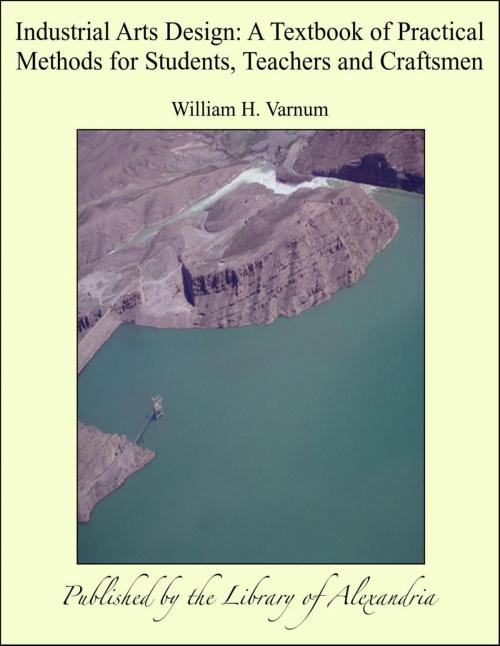Industrial Arts Design: A Textbook of Practical Methods for Students, Teachers and Craftsmen
Nonfiction, Religion & Spirituality, New Age, History, Fiction & Literature| Author: | William H. Varnum | ISBN: | 9781465580801 |
| Publisher: | Library of Alexandria | Publication: | March 8, 2015 |
| Imprint: | Language: | English |
| Author: | William H. Varnum |
| ISBN: | 9781465580801 |
| Publisher: | Library of Alexandria |
| Publication: | March 8, 2015 |
| Imprint: | |
| Language: | English |
Place for the Book. As a textbook, Industrial Arts Design is a practical guide for designing in wood, clay, and base and precious metals. It is intended for individual student use in the High Schools, Normal Schools, and Colleges and as a reference book for elementary school teachers. Its more complex problems are intended as definite helps to the industrial arts designer or craftsman. The wood problems are treated with special reference to their adaptability to bench and cabinet work. Need of the Book. It has been written to fill a decided demand for a textbook that shall, without loss of time, directly apply well-recognized principles of general design to specific materials and problems encountered in the Industrial Arts. A brief description of the decorative processes adapted to the materials under discussion with the design principles directly applying to these processes, insures designs that may be worked out in the studio or shop. It is hoped that this provision will eliminate the large number of impractical designs that are frequently entirely unfitted to the technic of the craft. This lack of mutual technical understanding between the teacher of design and the shop work instructor is the cause of friction that it is hoped will be removed by the methods advocated in these pages.
Place for the Book. As a textbook, Industrial Arts Design is a practical guide for designing in wood, clay, and base and precious metals. It is intended for individual student use in the High Schools, Normal Schools, and Colleges and as a reference book for elementary school teachers. Its more complex problems are intended as definite helps to the industrial arts designer or craftsman. The wood problems are treated with special reference to their adaptability to bench and cabinet work. Need of the Book. It has been written to fill a decided demand for a textbook that shall, without loss of time, directly apply well-recognized principles of general design to specific materials and problems encountered in the Industrial Arts. A brief description of the decorative processes adapted to the materials under discussion with the design principles directly applying to these processes, insures designs that may be worked out in the studio or shop. It is hoped that this provision will eliminate the large number of impractical designs that are frequently entirely unfitted to the technic of the craft. This lack of mutual technical understanding between the teacher of design and the shop work instructor is the cause of friction that it is hoped will be removed by the methods advocated in these pages.















